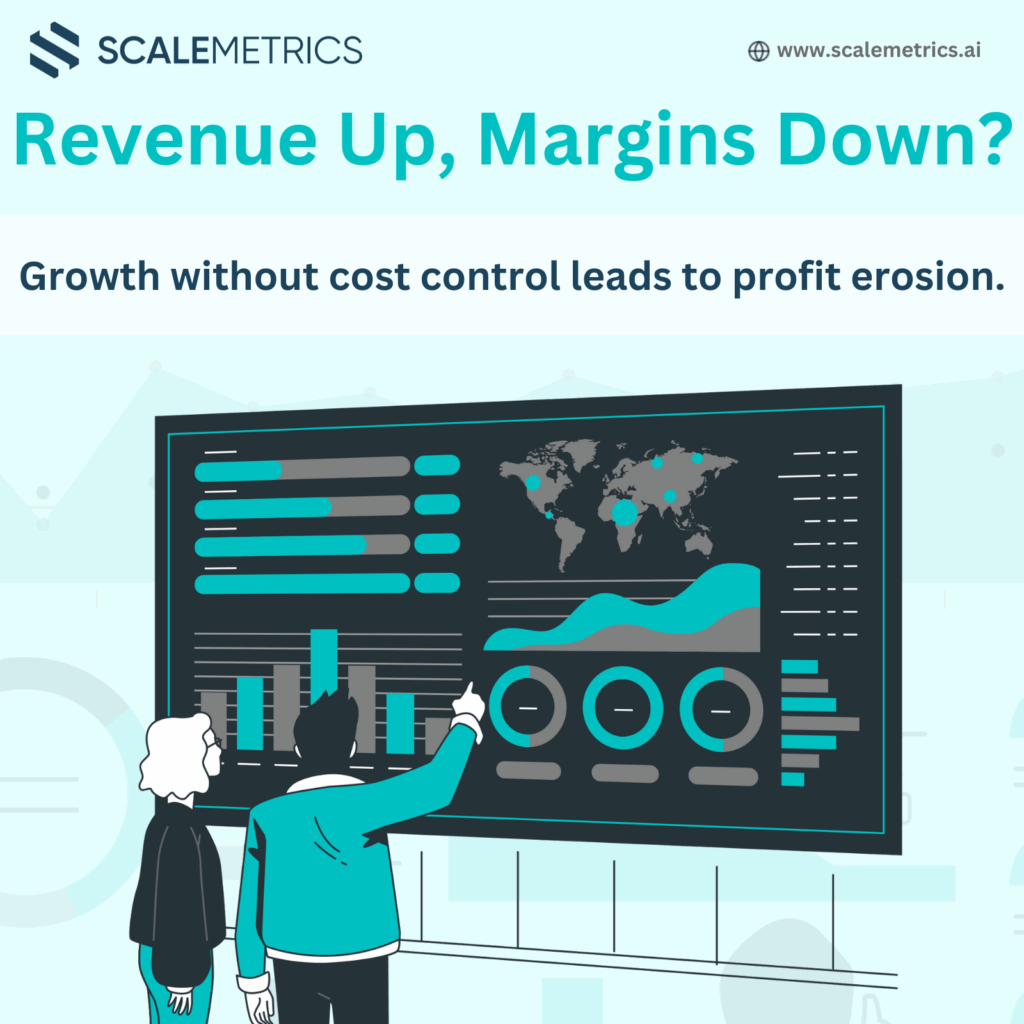When Was the Last Time You Really Analyzed Your Costs?

Most businesses swing hard at growth — launching new products, expanding teams, ramping up marketing — but forget one critical thing: to sharpen the blade.
In other words, they focus on scaling, but don’t regularly assess whether their cost structure is built to support sustainable, profitable growth.
Cutting costs isn’t about slashing blindly. It’s about understanding what drives value — and what doesn’t.
If your margins feel tight, or your profits aren’t growing in proportion to revenue, it may be time to take a closer look at your cost base.
Growth Without Efficiency = Profit Erosion
A common mistake among scaling businesses is to assume that revenue growth alone will solve financial problems. But if cost inefficiencies go unchecked, growth can actually make things worse.
Here’s what unchecked costs typically lead to:
- Shrinking gross margins
- Bloated operational expenses
- Lower ROI on sales and marketing
- Overstaffing in non-essential functions
- Declining cash reserves
Growth without financial efficiency isn’t sustainable — it’s risky.
Why Cost Analysis Needs to Be Proactive, Not Reactive
Many companies only look at their cost structure when there’s a crisis — a funding shortfall, a market downturn, or pressure from investors. But by then, it’s often too late to adjust without painful consequences.
A proactive cost analysis helps you:
- Identify waste or underutilized resources
- Understand unit economics and customer profitability
- Optimize team structure and technology spend
- Strengthen margins before pressure hits
Done right, cost analysis becomes a strategic lever for profitability, not just a defensive tactic.
What a Strategic Cost Review Looks Like
Effective cost reviews go beyond simply reducing headcount or cutting budgets. They focus on value-driven decisionsand align spending with strategic goals.
Key components of a high-impact cost review:
- Cost Classification by ROI: What are your high-impact vs. low-impact costs?
- Spend-to-Value Mapping: Are you investing in areas that directly support growth, retention, or product innovation?
- Fixed vs. Variable Cost Assessment: How flexible is your cost structure if the market shifts?
- Vendor and Subscription Audit: What tools or services can be renegotiated, consolidated, or eliminated?
- Headcount & Role Evaluation: Is your team aligned with your current phase of growth and core competencies?
The Goal Isn’t Just to Cut — It’s to Optimize
Cost optimization is about freeing up resources to invest in what truly matters:
- High-performing teams
- Core product development
- Scalable infrastructure
- Marketing initiatives with measurable ROI
In short, it’s about creating a leaner, stronger business model—one that supports growth without sacrificing profitability.
Feeling Margin Pressure? Let’s Take a Fresh Look
If your margins are tighter than they should be, or if your costs have grown faster than your revenue, you’re not alone.
But the solution isn’t slashing — it’s analyzing with intention.
At Scalemetrics, we help businesses like yours perform deep, strategic cost reviews that improve financial efficiency without compromising growth.
Want to know what’s really driving (or draining) your margins?
Let’s talk. A smarter cost structure might be the simplest path to higher profitability.
